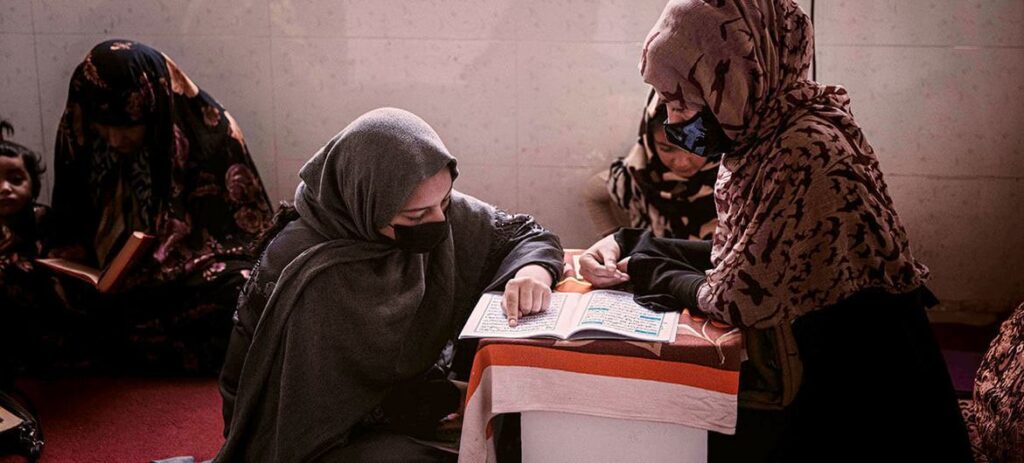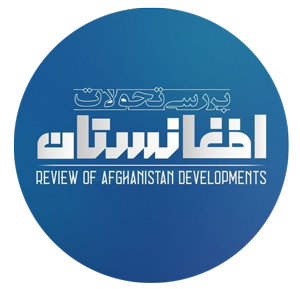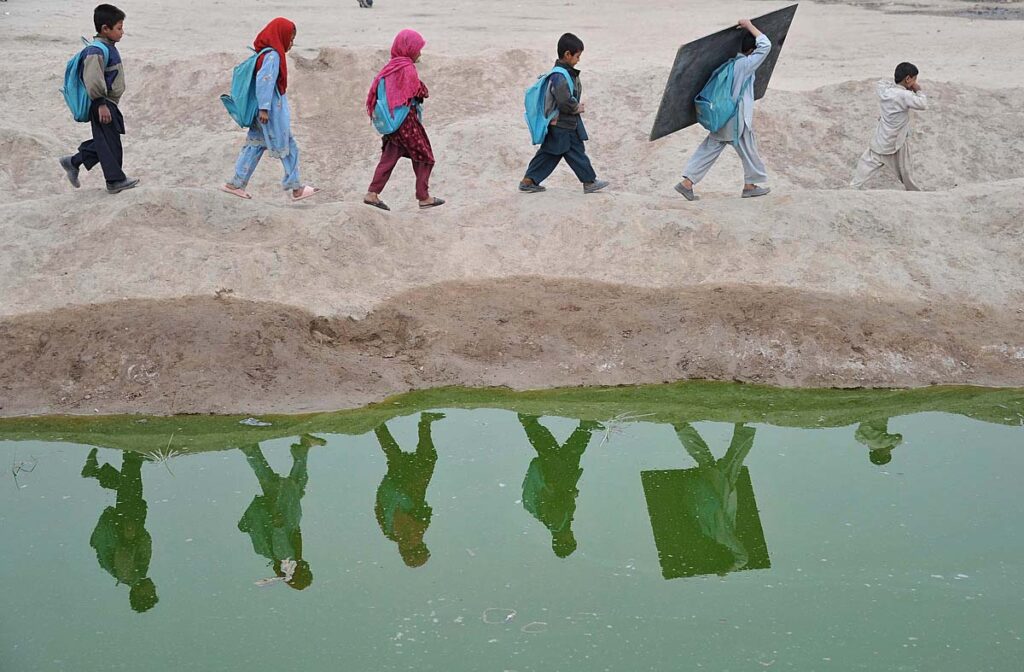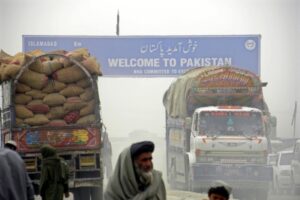Review of Afghanistan developments
Social harms have consistently posed significant challenges to the structure, dynamics, and functioning of societies. In various nations, such as Afghanistan, disparities among social elements, deficiencies in educational systems, and cultural constraints contribute to a range of social issues and harms. Addressing and preventing these problems requires awareness and identification, effective legislation, and the engagement of diverse institutions to foster the development of healthy and safe life skills.
Education, being a vital institution, plays a key role in mitigating these adverse effects, enhancing social cohesion, fostering social responsibility, and conveying cultural and ethical values. The sustainability of social security relies on the acceptance of its principles by the community, facilitated through mechanisms such as internal training, educational institutions, schools, universities, and networks for knowledge creation, all of which contribute to the overall well-being of society.
Social harms
Social harm encompasses a range of adverse effects that arise from the disconnection between social structures and the neglect of established norms. These harms can present themselves through various issues, including corruption, poverty, rising crime rates, suicide, deviant behavior, violence, gender disparities, and cultural anomalies. Essentially, social harms stem from deficiencies in the organization of social relationships, a lack of solidarity, and an inequitable distribution of resources within the community.
Education as a social process
Education encompasses more than merely the dissemination of knowledge; it is also a vital process of socialization, reinforcing values, and nurturing social norms. Viewed through this lens, educational institutions and organization bear the responsibility of not only enhancing individual competencies but also fostering human potential to advance social frameworks and contribute to societal development.
Education and social harms in Afghanistan
1. Creating social cohesion
In societies facing challenges related to ethnicity, religion, and politics, like Afghanistan, education serves as a vital instrument for fostering communication and unity among individuals while structuring social interactions. This enhancement of community ties promotes a greater sense of belonging. By reinforcing social connections, building mutual trust, and encouraging civic engagement, education can alleviate social tensions and intergroup conflicts, ultimately contributing to a more harmonious societal environment.
2. Reducing inequalities and breaking the cycle of poverty
A significant challenge confronting Afghanistan is the disparity in social and economic conditions. Focused educational initiatives can serve as a means to disrupt the cycle of poverty by creating job opportunities and fostering sustainable employment. Studies indicate that individuals with education are more inclined to secure high-paying positions; thus, enhancing educational access for everyone, particularly in underprivileged regions, can help diminish class disparities and improve the overall welfare of society, while also mitigating the adverse effects of poverty.
3. Marginal groups
Education serves not merely as a means of imparting knowledge; it is also a vital instrument for fostering awareness, self-awareness, and the capacity for independent decision-making. In Afghanistan, women, who are a marginalized demographic, face a multitude of restrictions and have long been denied access to education. Consequently, their potential contributions to enhancing the economic and social landscape have not received adequate recognition.
Education has the potential to transform societal attitudes and behaviors, thereby enhancing the status of women. Women who are educated possess greater empowerment to address social and economic challenges, enabling them to stand against domestic violence and various forms of discrimination.
The recognition of civil and social rights, along with the empowerment of women, contributes significantly to the development and progress of families. In this context, educated women have the capacity to foster positive societal transformations and serve as catalysts for change within social decision-making frameworks.
In light of the aforementioned points, it is essential for policymakers and executive authorities to recognize the multifaceted role of education as a means of empowerment and a strategy for mitigating social issues. Therefore, investing in women’s education will not only enhance their personal circumstances but will also influence family dynamics, societal structures, and contribute to the broader development of the country.

4. Reducing crime rates and social violence
Access to education is crucial in mitigating antisocial and criminal activities. Individuals with education are less inclined to partake in deviant actions, as they possess greater economic, social, and legal awareness, along with a heightened sense of social responsibility. In communities affected by persistent violence and criminality, educational access can significantly contribute to lowering these occurrences and fostering positive social conduct, ultimately ensuring the well-being of society.
5. Family growth and strengthening
The family serves as the fundamental social unit and a crucial institution for individual socialization, acting as a medium for the transmission of values and norms. The educational background of parents, particularly mothers, plays a vital role in the upbringing of their children. Research indicates that the literacy and knowledge of mothers have a profound influence on the health, personal growth, and awareness of their children. Therefore, eliminating barriers to women’s education and fostering informed parenting directly contributes to enhancing family dynamics, which in turn promotes the overall health and development of society.
6. Creating a healthy and sustainable society
Education serves as a powerful tool not only for individuals but also for communities as a whole. Societies that prioritize education and continuous learning tend to exhibit strong cultural and economic foundations. In such environments, individuals and the community are interconnected and reinforced, leading to enhanced social cohesion. Conversely, limited access to education can result in diminished human capital, weakened solidarity, and ultimately hinder the growth and development of society, creating a breeding ground for various social issues.
Challenges and Obstacles to Education in Afghanistan
1. Cultural and social barriers
Cultural norms and traditional beliefs, particularly in rural regions, restrict educational opportunities for schools and universities, with women being disproportionately affected. The notion that education is not vital for girls, along with recent government policies, has made families hesitant to consider educational and career paths for their daughters. With the majority of the Afghan population being rural, this issue, along with a lack of awareness, serves as a potential breeding ground for further underdevelopment and the perpetuation of discrimination and social harm.
2. Lack of educational infrastructure
Many parts of Afghanistan, especially in rural settings, face a pronounced shortage of adequate educational facilities. The insufficient number of proper schools and the lack of specialized educators are pressing concerns in these regions. Additionally, the unstable security situation in some areas has obstructed students from accessing education, resulting in a substantial portion of the population being deprived of educational opportunities.
3. The influence of political factors and the imposition of restrictions
Following the Taliban’s return, Afghanistan’s educational environment has experienced adverse transformations, especially for women. The restrictions on school access, the shutdown of educational institutions, and the political limitations imposed on women’s education have severely impacted the country’s economic and social advancement, further intensifying gender inequalities.
Solutions and suggestions
1. Improving educational infrastructure
The establishment and enhancement of schools and educational facilities in rural areas, coupled with the training of teachers and specialists, as well as the fortification of technical infrastructure, can ensure educational access for every segment of society. It is crucial for governments and international bodies to collaborate in making the necessary investments to upgrade this infrastructure. Such investments in education can drive sustainable development and reinforce Afghanistan’s role in the international arena.
2. Promoting cultural and social awareness
Implementing workshops, training programs, and cultural activities in the community can play a crucial role in transforming established attitudes towards the importance of education. By enlightening families about the long-term advantages of education, particularly for girls, we can establish a constructive environment that encourages growth and development.
3. Developing women’s empowerment programs
The implementation of specialized training programs, the provision of technical and vocational education, and the support of women entrepreneurs are essential actions to boost women’s engagement in the labor market. Such efforts will not only elevate the economic status of households but will also yield beneficial effects on the societal structure over time.
Conclusion
Education serves as the foundation for social development, acting as a catalyst for change and a preventive measure against social harms. In a country like Afghanistan, where numerous cultural, political, and economic difficulties persist, it is vital to guarantee equal access to education for all societal segments. The overall progress and health of the community rely on achieving educational fairness and tackling the challenges that affect every group. Strengthening educational infrastructure, advancing cultural and social awareness, developing programs for empowerment, and establishing global cooperation are key steps that can effectively reduce social harm and promote a more sustainable society.
Ultimately, the investment in education goes beyond merely developing a skilled workforce; it is also about fostering the cultural values and social norms that underpin sustainable growth and development. In an environment where social issues obstruct societal advancement through insufficient education and limited access to human resources, the proposed solutions can help guide Afghan society toward a more hopeful future.ca
Consequently, any policy that fails to foster inclusive and non-discriminatory education will inevitably obstruct the growth and strengthening of social structures. Ultimately, it is highlighted that the realization of development objectives in Afghanistan relies on the active involvement of all societal groups, particularly women. Establishing an appropriate educational environment not only mitigates social harms and issues but also fosters talent development, empowers individuals, and contributes to long-term social stability.

















